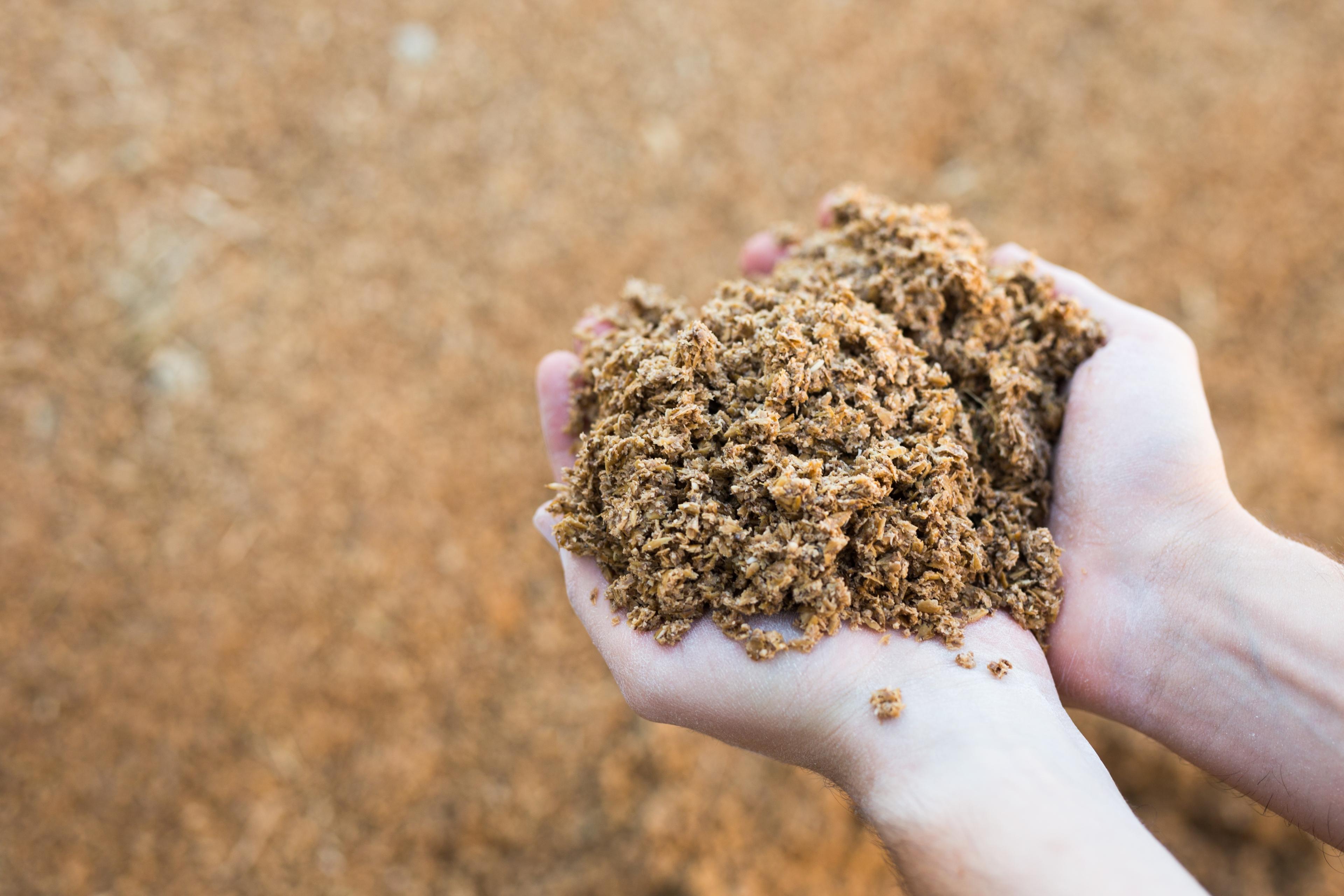Belgium is globally known for its many beers. This means that there are also many breweries operating, all of which produce the side-stream brewer’s spent grain (BSG). For every glass of beer produced, about 1 glass of BSG is produced. An abundant side stream with potential.
About BSG
BSG is a side stream from beer production. It is a fibre- and protein-rich stream that is used as a raw material in animal feed. However, precisely because of its high fibre and protein content, it could also be an interesting product to use as an ingredient in the food industry. For instance, it could improve the nutritional properties of e.g. bread.
BSG is released in the brewery as a warm, wet stream that spoils quickly. Stabilisation is therefore a crucial step before further storage and processing. Drying seems to be the best option in this regard. Besides drying, grinding the BSG is also a key step in the processing process, as BSG has the property of having a "prickly" mouthfeel when not ground finely enough.
Valorisation of BSG towards food can be done both by using the full fraction and by extracting macro components. The former is further investigated in the Draf in Galop project, while the latter was addressed in the Effsep project. This article zooms in on using the full BSG fraction.
Draf in Galop
In the ‘Draf in Galop’ project, a TETRA project led by VIVES, various options for drying and grinding BSG are being tested to arrive at a useful ingredient for the bakery and meat analogue sectors. Product development is also being done with both dry and wet BSG.
BSG in the food industry
Currently, BSG is already used to a limited extent in the food industry, and mainly for niche products. For example, Crelem Bakeries makes the Ter Dolen bread, made with BSG of Ter Dolen brewery, and brewery Val-Dieu makes BSG-based crackers. In these products, the link with BSG is very clear to the customer.
These two products are an example of niche products, where a relatively small part of the product range is enriched with BSG or where a small part of the BSG production goes to a food product. It is therefore not a large-scale valorisation model. The final product has a clear link to BSG, in terms of taste, appearance and marketing, and is also advertised as such. An interesting story can be told towards the customer with this type of product, allowing more margin for pricing.
Another strategy is to use BSG as a nutritional ingredient in a large part of the product range, which can be used for fibre enrichment, for example. In this way, larger quantities of BSG can be valorised. Important here is that taste and colour of the end product are still attractive to customers. After all, the products are not BSG-specific products to which a story around valorisation is linked and a specific BSG taste is desired. Rather, this scenario focuses on health and fibre enrichment.
Both strategies have advantages and disadvantages. For instance, the first strategy is mainly interesting for smaller breweries and food producers that want to focus strongly on short chain and local collaborations. In turn, the second scenario is more interesting for larger breweries and food producers that want to incorporate BSG in a whole range of products.
However, if BSG is to gain widespread acceptance in the food industry in Flanders, a number of hurdles still need to be overcome:
- Stabilisation: stabilising BSG is crucial for a good shelf life of both the ingredient and the final product, but it is an energy-intensive, and therefore costly, step. Moreover, brewers and food producers usually do not have the capacity for this. There needs to be an intermediary to take up this step.
- Logistics: if BSG would be used on a large scale, sufficient and constant supply of BSG is needed. This is quite possible in collaborations between large breweries and food companies, but is more difficult when collaborating with small breweries, of which Flanders has many. Moreover, the latter group often makes different beers at different times of the year, so the composition and properties of the produced BSG also differ.
- Sensory properties: BSG can give an unpleasant mouthfeel if it is not ground fine enough. The colour of BSG can also cause a product to darken, which may no longer be as appealing to consumers.
- Price: the price of BSG must be commensurate with the price of the final product.
So still plenty of challenges!




